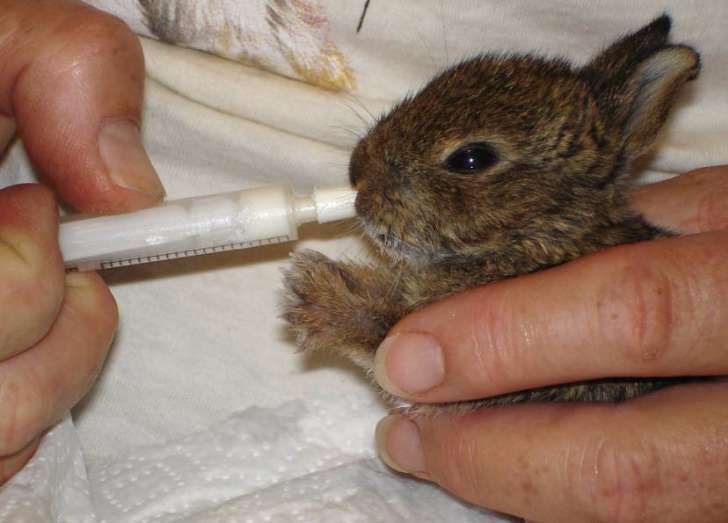What do you feed baby painted turtles
12 Things Baby Painted Turtles Like to Eat Most (Diet, Care & Feeding Tips)
The baby painted turtles get tough love from their mother – after she lays her eggs, she provides no care for the hatchlings.
When the babies come out of the nest, which is typically at night, they are left alone to find water and survive.
Let’s discuss how the baby painted turtles do that, along with some basic information about the species.
Table of Contents
- Habits and Biology of the Baby Painted Turtle
- Do Baby Painted Turtles Eat Dirt?
- What Do Baby Painted Turtles Like to Eat Most?
- Tips to Feed Baby painted turtles
- Foods Baby or Adult Painted Turtles Should Avoid
- FAQs
- Summary
Habits and Biology of the Baby Painted Turtle
These species are mainly found along the coasts from the Atlantic to the Pacific. They can be found in 45 American states and 18 Canadian states.
Painted turtles like to dwell in fresh water and can be found in lakes, ponds, and marshy areas. They basically live a life of leisure, basking in the sun for five or six hours daily. When they are not sunbathing, they eat.
There are four subspecies of the Painted Turtle:
- Eastern Painted Turtle
- Midland Painted Turtle
- Southern Painted Turtle
- Western Painted Turtle
Size
The female painted turtle is longer in body size than their male counterparts. The female varies in size between four and ten inches in size, and the males are three to six inches.
Body
Under the hard external shell of the turtle is soft, fleshy skin.
Coloration
The shells are typically olive or black in color. The skin of the turtle depends on the color of the shell. The lower portion of the shell is red or yellow, while the middle part of the shell is dark-colored.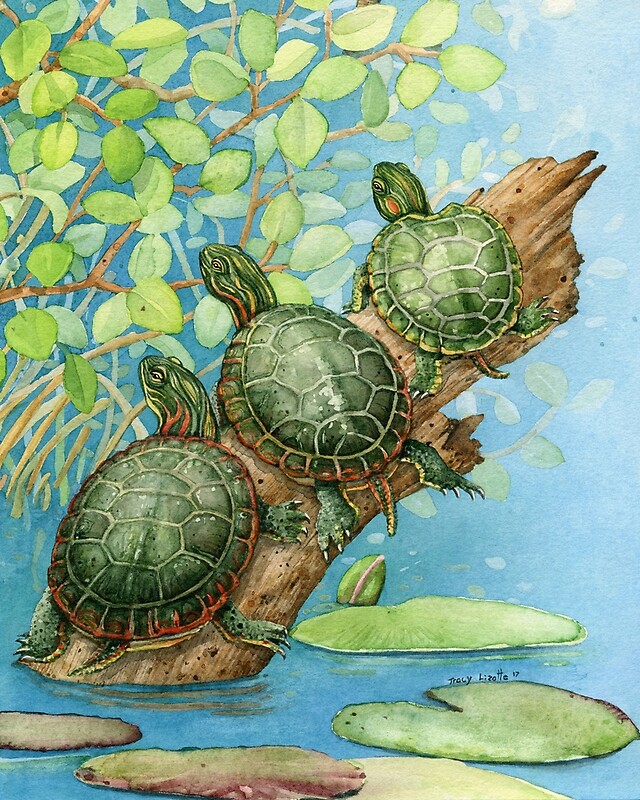 The neck, legs, and tail are dotted with yellow and red marks.
The neck, legs, and tail are dotted with yellow and red marks.
Head
The head of the painted turtle is distinctive. The face has yellow stripes, with a large yellow spot and streak behind each eye, and on the chin, it has two wide yellow stripes that meet at the tip of the jaw.
Sexual Dimorphism
The male of the species is the one with long, pretty nails. They touch the cheeks of their partners to express love. This species mate from mid-April to the end of July. When they are prepared to mate, they swim to the bottom of the water. The females lay four to 20 eggs out in the open.
Even though painted turtles are in water most of the time, the female turtles are amniotes, meaning they lay their eggs on land. They like their nests to dug in soft, sandy soil with good sun exposure. The turtle digs the nest with her hind feet, usually within 200 meters of the water.
After hatching, the babies grow rapidly. The development of the females is faster than the males. The male painted turtle reaches sexual maturity between two and four years, the female between six and ten years.
The male painted turtle reaches sexual maturity between two and four years, the female between six and ten years.
A fun fact: Painted turtles cannot move their tongues freely on the land, so they must eat in the water to manipulate their food and wash it down.
Life Span
The average life span of a painted turtle is 20 to 30 years. They have been known to live over 50, however.
Do Baby Painted Turtles Eat Dirt?
No. Baby painted turtles don’t eat dirt.
What Do Baby Painted Turtles Like to Eat Most?
Baby painted turtles have the same diet as adult painted turtles. The only difference is that babies and juveniles prefer to eat more meat than an adult turtle.
Even if they are omnivorous as a species, juveniles and babies are typically carnivorous. Even though they like plants, baby painted turtles will eat more meat because they need protein to grow faster.
Painted turtles are omnivorous, meaning they will eat fruits, vegetables, and meat.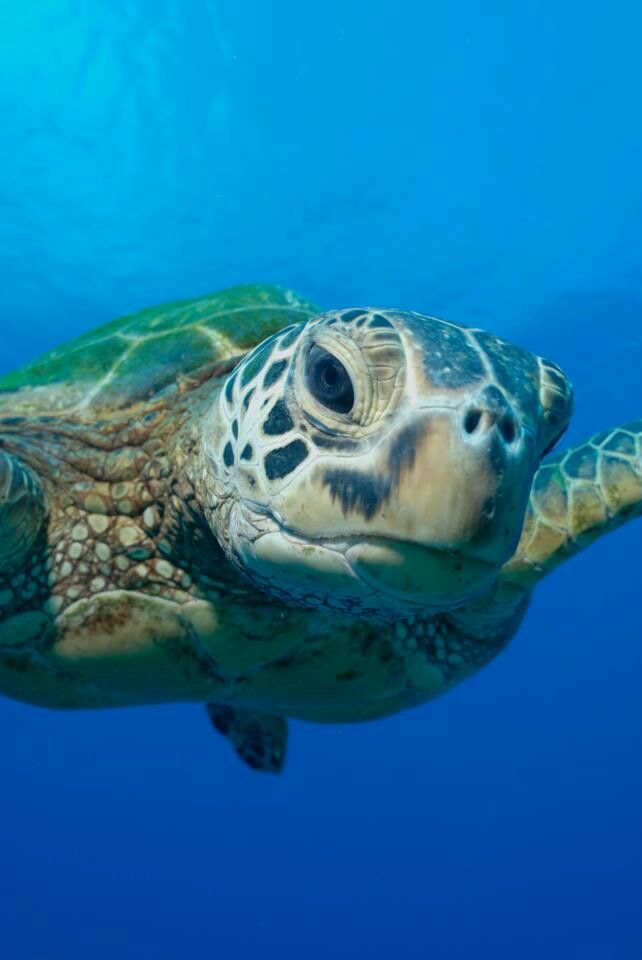 Here is a list of what a painted turtle will typically eat:
Here is a list of what a painted turtle will typically eat:
- Bugs
- Fish
- Fruits
- Insects
- Meat
- Newts
- Pellets
- Snails
- Vegetables
- Vegetation
- Water plants
- Worms
Many people enjoy keeping painted turtles as pets. Here are three foods that are rated five stars by Amazon customers that can ensure the good health of your pet.
1. Tetra ReptoMin Floating Food Sticks for Aquatic Turtles
- For aquatic turtles, frogs, and newts. Scientifically formulated for small aquatic pets.
- Has precise amounts of calcium, vitamin C, and nutrients to support vitality and good health.
- Scientifically formulated and proven to be accepted by dozens of species. Easy to digest
- Feed once or twice a day, only as much as your turtle can consume within a few minutes
2. Zoo Med Natural Aquatic Turtle Food
- No artificial preservatives or colors
- 25% protein
- For turtles over 6”
- 5/16” pellets
3.
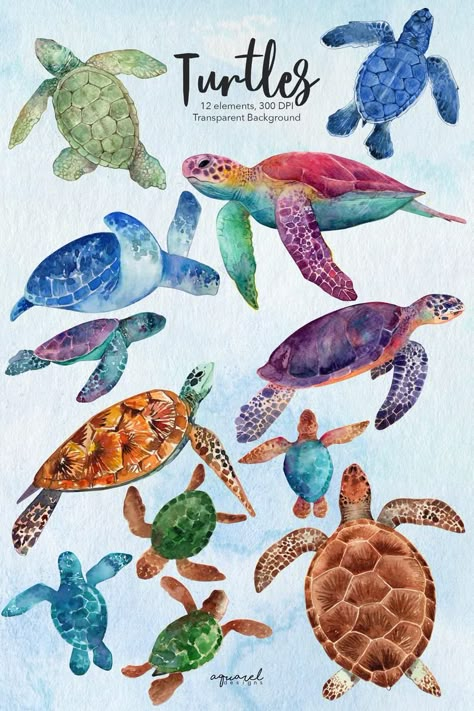 Mazuri Aquatic Turtle Diet
Mazuri Aquatic Turtle Diet- Nutritionally complete. No supplements are required.
- A floating diet that mimics natural feeding behaviors
- High quantity of fish and animal proteins. Meets the requirements of carnivorous species.
- Contains vitamin E
Tips to Feed Baby painted turtles
The best way to feed your painted turtle pet is to give it dried insects. The most popular insect you will find is dried crickets. Dried crickets are especially good for painted turtles because they have little fat and a lot of protein.
Painted turtles usually eat any kind of water plant. All aquatic plants that are available in a pet shop will be suitable for your turtle. However, they will not look good for more than a couple of days.
Most pellets labeled for turtles are good. Fish pellets are also good. They contain basically the same ingredients. A good pellet should contain a healthy amount of protein, usually between 25% to 30%.
In the wild, painted turtles eat the same things as pet turtles. The difference being, they won’t encounter cooked meat or food pellets in the wild. In the wild, they are limited to what they can find, not to what someone feeds them.
When it comes to meat, they will rely on small insects, fish if they can catch them, and any other kind of meat they can scavenge. The most abundant food source for painted turtles is insects and water plants.
Most ponds, lakes, and rivers are full of water plants. Insects are basically everywhere, so there is never a shortage, especially in dense vegetation areas where the painted turtles live.
If you want your baby painted turtle to grow into a healthy adult turtle, feed him a balanced diet.
Foods Baby or Adult Painted Turtles Should Avoid
Painted turtles will usually eat any fish they can catch, not caring what type it is.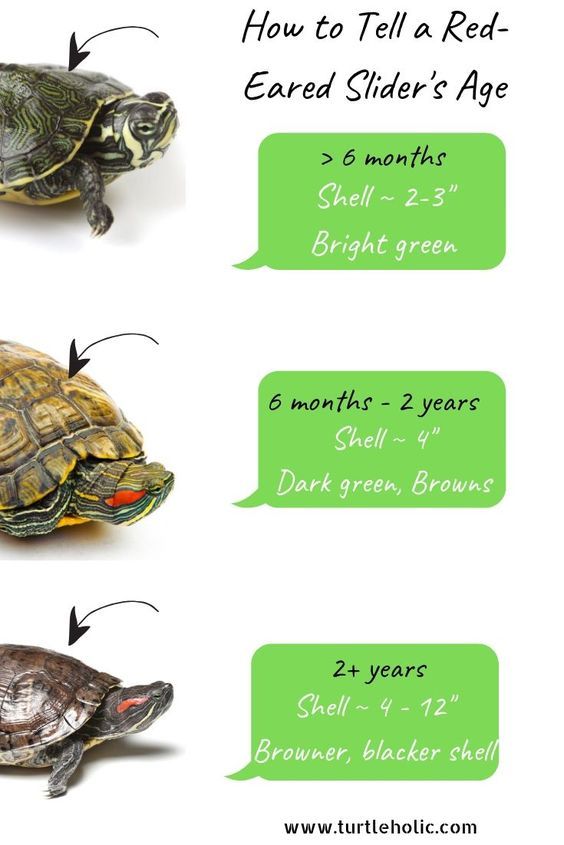 In general, they will eat small fish that are easier to catch and will not resist too much.
In general, they will eat small fish that are easier to catch and will not resist too much.
If keeping a painted turtle as a pet, keep in mind when feeding your turtle that any fish you feed them should always come from a pet store and not from a body of water. Wild fish contain bacteria that the turtle is not used to, and health problems can develop.
Here are some fish that should not be fed to your baby or adult painted turtle.
- Carp
- Feathered Minnow
- Gizzard Shad
- Goldfish
- Rosy Red Minnow
Some vegetables contain high doses of oxalates, which interfere with calcium absorption resulting in health issues. Here are some vegetables you should not feed your baby or adult painted turtle.
- Beetroot
- Chard
- Endive
- Potatoes
- Rhubarb
- Spinach
1. What is the first thing to do when considering getting a turtle for a pet?
- The first step in owning a pet turtle is understanding the great responsibility involved in taking care of a turtle.
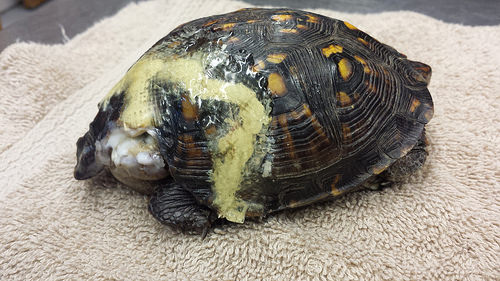 Turtles require a great deal of care, with basic needs to be met.
Turtles require a great deal of care, with basic needs to be met.
2. Do turtles carry germs or diseases?
- All animals carry germs. Some turtles carry the disease salmonella. There is no way of knowing which turtles carry the disease.
- Handwashing is necessary after handling them. If you have children around your turtle, make sure they do not put their hands in their mouths and ensure they wash their hands after handling.
3. Can there be more than one turtle in one tank?
- Young turtles get along well together. However, as they age, older and mature turtles can have issues due to hormones. They may begin to fight amongst themselves. If you put more than one turtle in the same tank, be sure that each one has its own hiding place. If you have a male and female together, you need to consider the possibility of breeding.
4. What needs to be done if the turtle has babies or lays eggs?
- If eggs have been laid, it is necessary to remove them from the water within a couple of hours to prevent death.
 They will die because they are being deprived of oxygen, or in other words, they will drown.
They will die because they are being deprived of oxygen, or in other words, they will drown. - When removing the eggs, ensure that the eggs remain in the same position as when they were laid. To help you remember which way is up, mark them with a magic marker.
- Next, incubate them in a box. You need equal parts of water and vermiculite, sold at garden stores. Make small impressions in the mixture and gently set the eggs in place.
5. Can turtles go into hibernation?
- Yes, a turtle can hibernate. If you choose to hibernate your turtles, only do so with the well-fed and healthy. If your turtle is sick, do not hibernate them.
- A problem can occur with hibernation if the temperature is too warm, around 60 degrees F., your turtle will not hibernate. At this temperature, it is also too cold to eat. Your turtle will lose energy and starve to death.
- If it is over 90 degrees F, they need to be kept cool, as they cannot regulate their own temperatures.
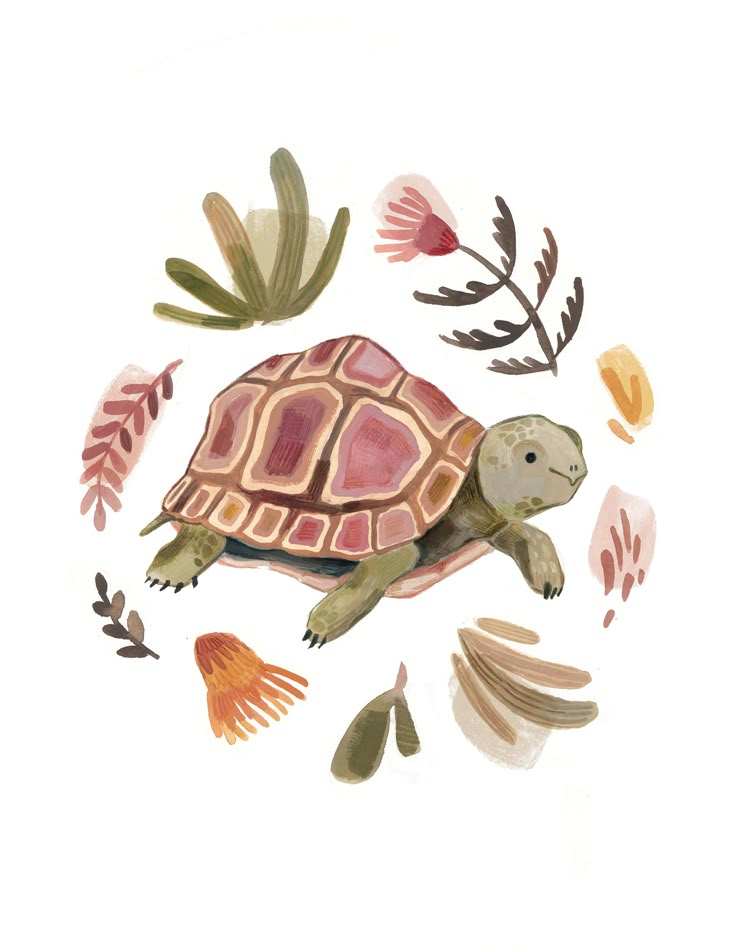 Put a thermometer in the box and check them every half hour or so.
Put a thermometer in the box and check them every half hour or so.
6. I inherited a turtle from a friend. How do I know what kind it is?
- Does your turtle have webbed feet between the toes? If it’s webbed, then it is a kind of semi-aquatic turtle or aquatic turtle.
- If the feet are not webbed, then it is a kind of land turtle. If it has flippers for front legs, it is a sea turtle.
- Does your turtle have a high, domed shell? Then it is a box turtle.
- If your turtle has a flat, unkneeled shell with black, yellow, and possible orange or red markings, it is of Chrysemys species. This includes sliders, cooters, and painted turtles.
- Is your turtle green, yellow, and black with orange or red markings on the sides of their face? It is a red-eared slider.
- Are there red crescents on the marginal scutes and yellow or red stripes on its legs? If so, it is a painted turtle.
- Does your turtle have any clawed front feet and are they webbed in the back? Is there a small underside shell that makes it look fat? Does your turtle have a big head, a long tail, and a long neck, much larger than the shell? Does it have a hooked jaw? Does it have a dark or black shell? Then it is a kind of snapping turtle.
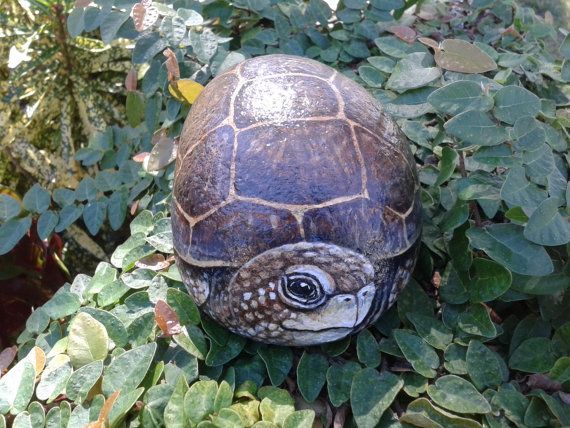 Be careful; he may bite.
Be careful; he may bite. - Does your turtle have soft, leathery skin? Then it is a softshell turtle.
7. Do turtles breathe air?
- Yes. They have lungs that require air to breathe. They can hold their breath for long periods as well. During sleep, they can hold their breath for up to a couple of hours.
8. Can a snapping turtle really bite off someone’s finger?
- Yes, they will snap at anything.
- They are very fast and have long necks. An alligator snapping turtle can get up to 300 pounds and can remove a hand or foot.
9. What do I need for my turtle’s housing needs?
- You will need a tank, a minimum of 20 gallons, the bigger, the better, a heater, a basking light, a UVB light, a filter, a basking area, a thermometer, and water.
10. What kind of plants can I put in the tank with the turtles?
- A good water plant is the water hyacinth. You can also use anachris, water lettuce, and amazon swords.
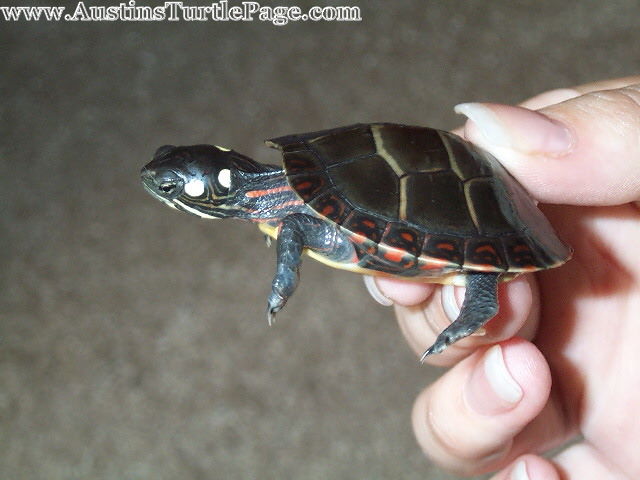
- If you just want a plant “look,” use plastic plants.
Summary
Fortunately, all subspecies populations of the painted turtle are not at risk of extinction and are not the subject of any conservation actions. Many people consider the painted turtle the most attractive turtle making them popular as a pet.
ATSHQ: American Tarantula & Animals
Helping You Find What American Animals Like To Eat Most!
SearchTarantula Spiders
Pets | Tarantula
ByAmerican Tarantula & Animals
It is estimated that 3%-15% of all people have arachnophobia, irrational fear of spiders and other arachnids. So, you don’t have to think you are weird for feeling uncomfortable at the mere thought
Tarantula
ByAmerican Tarantula & Animals
Do exotic animals fascinate you? Are you considering bringing a cobalt blue tarantula home? These giant spiders are popular pet choices. But you must understand their temperament, mating habits, diet,
Tarantula
ByAmerican Tarantula & Animals
Few arachnids are as stunning as the Brazilian Jewel tarantula.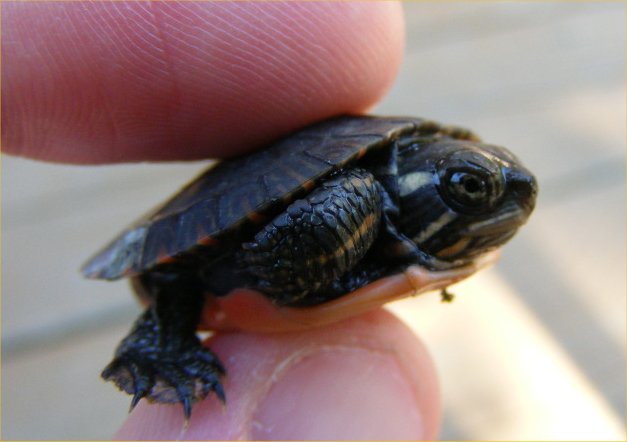 With its vibrant colors and mild temperament, it is an excellent choice if you want to keep a calm spider
With its vibrant colors and mild temperament, it is an excellent choice if you want to keep a calm spider
Tarantula
ByAmerican Tarantula & Animals
Colorful, active, and friendly are some of the distinct qualities that make the Green Bottle Blue tarantula such an attractive and interesting species. This tarantula is excellent for beginners. But,
Tarantula
ByAmerican Tarantula & Animals
The Singapore Blue tarantula has a lot going for itself. It boasts a comparably large leg span, and its iridescent blue color gives it an attractive glow. But, like all
Tarantula
ByAmerican Tarantula & Animals
The Brazilian Black tarantula is a simple arachnid with an inherently low-key sophistication. With its solid Black, almost velvety body, it grows and moves slowly, with grace; it has nothing
Wild Animals
Wild Animals
ByAmerican Tarantula & Animals
If you’ve walked alongside a pond or wetlands recently, you’ve probably come across the bullfrog.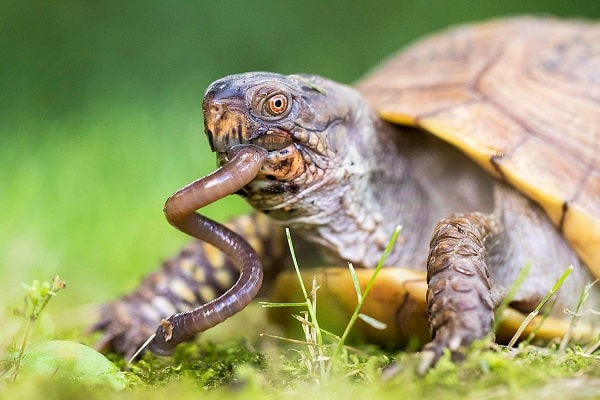 Known for their appearance, unique style of movement, and the sounds they make, these amphibians play a vital role in
Known for their appearance, unique style of movement, and the sounds they make, these amphibians play a vital role in
Wild Animals
ByAmerican Tarantula & Animals
Orangutans are a beautiful species that have captivated millions around the world with their beauty and brightly coloured fur. Many name them as being their favourite animal, but you may
Wild Animals
ByAmerican Tarantula & Animals
Elephant seals are unique animals that often feature in nature documentaries and zoos around the world. Many people know of the elephant seal, but their knowledge goes no deeper than
Wild Animals
ByAmerican Tarantula & Animals
If you’ve ever seen the classic cartoon show the Looney Tunes, you might be familiar with a speedy bird that always outruns Wile E. Coyote. While the antics were for
Wild Animals
ByAmerican Tarantula & Animals
When we talk about carnivore animals, most people get more or less the same image flashing behind their eyes almost immediately – that of a large wild cat or a
Wild Animals
ByAmerican Tarantula & Animals
Having a lizard for a pet feels strange to a lot of people but if you’ve ever done it before, you know how adorable, rewarding, and easily manageable these animals
Pets Diet
Pets
ByAmerican Tarantula & Animals
Superworms are the larvae stage of the darkling beetle species.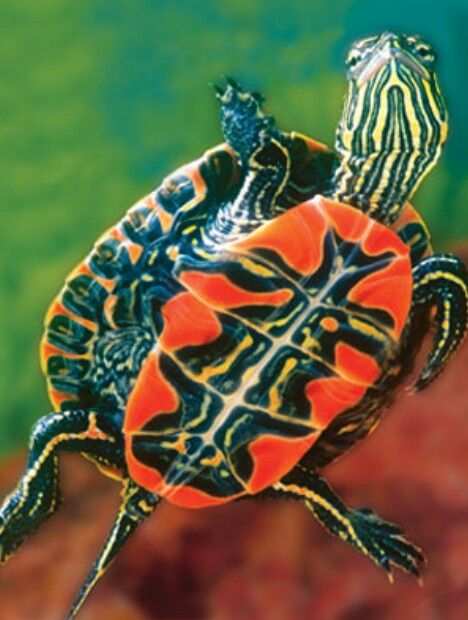 Even if they aren’t the prettiest of creatures, they are some of the most useful worms to keep. But contrary
Even if they aren’t the prettiest of creatures, they are some of the most useful worms to keep. But contrary
Pets
ByAmerican Tarantula & Animals
Having a red-eared slider turtle as a pet can be a lot of fun. But caring for this little creature may be harder than you think. You need to provide
Pets
ByAmerican Tarantula & Animals
Ghost shrimps are the most popular aquarium animals also known as glass shrimp or grass shrimp. They are quite adorable and inexpensive to keep. Most people purchase them to serve
Pets
ByAmerican Tarantula & Animals
Wrens are small, cute, and plump-shaped birds that will surely fascinate you at first appearance. They are popular for singing without holding back. Do you like waking up and sleeping
Pests Guides
Pests
ByAmerican Tarantula & Animals
Do you have voles around you? Have you ever wondered what they eat to keep fit at all times? Have you ever wondered about their habitat, eating habits, life span,
Pests
ByAmerican Tarantula & Animals
Pill bugs go by many names. A roly-poly is a name for some while others know them as woodlice, armadillo bugs, potato bugs, policies, and even tiggy-hogs. If you’re out
A roly-poly is a name for some while others know them as woodlice, armadillo bugs, potato bugs, policies, and even tiggy-hogs. If you’re out
Pests
ByAmerican Tarantula & Animals
If you’ve ever found a swarm of gnats in your home, you might be wondering why they’ve arrived. Most gnats move to find a food source and lay eggs, so
Pests
ByAmerican Tarantula & Animals
According to a study from the Journal of Food Protection, fruit flies are responsible for many foodborne illnesses. So, what are the ways we can do to get rid of
Pests
ByAmerican Tarantula & Animals
Termites, one of the most common types of pests, are known as the “silent destroyers”, because of their ability to chew through wood undetected. But eating wood is not the
Pests | Wild Animals
ByAmerican Tarantula & Animals
Newts are a semi-aquatic species of salamander that resemble a cross between a frog and a lizard. These amphibians look like frogs with their moist, silky skin, but have a
These amphibians look like frogs with their moist, silky skin, but have a
Painted Turtle Facts & Pet Care Guide
The painted turtle is the most common turtle species in North America. They are also a popular choice as a pet due to their bright "painted" markings, although the tortoise is not easy to care for.
Painted turtle species
There are four subspecies of the painted turtle ( Chrysemys picta ) found in North America, each in a different region.
Related Articles
- Box Turtle Pictures
- Oscar Fish Pictures
- Betta Fish Photos
Oriental Painted Tortoises
", bright yellow. They also have yellow and red lines on their black skin. They can be up to seven inches long.
Painted Midland Turtles
The painted Midland tortoise is very similar to the Oriental version, but they have a dark area on their belly and the pattern on their shells is different. Their native habitat starts in Ontario, Canada along the Mississippi River to Alabama and Tennessee. When fully grown, they are about seven inches long.
Their native habitat starts in Ontario, Canada along the Mississippi River to Alabama and Tennessee. When fully grown, they are about seven inches long.
Western Painted Tortoise
Western Painted Tortoise has an olive green shell and dark underbelly. They can be found throughout Canada, the US and Mexico. Western painted turtles are the largest of the painted turtle species, reaching about eight inches in length.
Southern painted turtles
The southern painted turtle has a yellow-orange stripe running down the middle of its shell and a yellow underbelly. They are commonly found in the Mississippi River region, as well as in Alabama, Louisiana, Mississippi, and Missouri. They are the smallest painted turtles, reaching about six inches in length as adults.
Is it worth taking care of a painted turtle?
Painted turtles can make good pets but they are not the best choice for beginners or for people who are short on time as they have many care requirements. They are also not the best choice if you have someone with a weakened immune system, the elderly, or very young children in your home due to the risk of salmonella infection.
They are also not the best choice if you have someone with a weakened immune system, the elderly, or very young children in your home due to the risk of salmonella infection.
Painted turtles and salmonella
Owners of painted turtles should be aware of the risk of transmitting salmonella. All turtles carry the risk of Salmonella infection, which can lead to mild to severe, life-threatening illness in humans. You should always wash your hands thoroughly after contact with turtles, as well as touching any part of their habitat, such as when you clean the cage or after feeding. Remember that any part of a turtle's or tortoise's habitat can be infested, so it's important to keep your turtle in the tank as well as practice good hygiene for yourself. If you put turtles on furniture or a kitchen counter, clean and disinfect the area to eliminate any possibility of salmonella contamination.
Painted turtle tank setup
Painted turtles need a setup that meets their biological needs.
Waters
Since the painted turtle lives in and near bodies of water such as rivers, streams and ponds, your painted turtle habitat must have water. A good rule of thumb: the depth of the water should be at least twice the width of the turtle's shell. For example, for a turtle with a six-inch shell, you need to have at least 12 inches of water. You also need to have a good filter to keep the water clean.
Substrate
You don't need to provide any bottom substrate, but if you need rocks or sand for appearance, make sure the individual pieces are too big for your turtle to try to eat and swallow.
Plants
Your turtle will also appreciate plants, live or fake, for hiding. Painted turtles tend to destroy living plants, so be prepared to replace them.
Hiding places
In the wild, a painted turtle will swim underwater and find places to hide, and they will need the same place in their aquarium. You can make an underwater shelter using rocks, driftwood, or a pre-sculpted cave purchased from a pet store.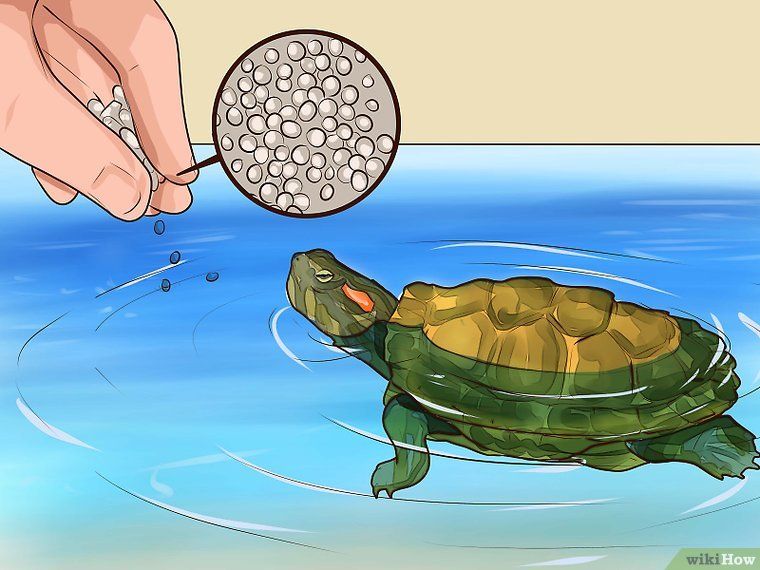 Make sure they can't get into cover as this could cause them to drown.
Make sure they can't get into cover as this could cause them to drown.
mail will be delivered on Christmas Eve
Basking
Your turtle will need a place to come out of the water to bask, which can be a bathing platform or you can use rocks or driftwood. You will also need a heating light in this area to help them regulate their temperature. Painted turtles can stay out of the water for several hours, but as a general rule, they shouldn't be out of the water for more than six to eight hours.
Lighting
Your turtle will need daily light to stay healthy, which can be UV or UVB light. This light is separate from the heating element, which can also provide light. You should turn on the lights on a normal day/night cycle, turning them off in the evenings.
Temperature
Tank temperature should vary depending on the "region" of the tank.
- Water temperature must be between 75 and 80 degrees F, which may require an immersion heater in the tank.
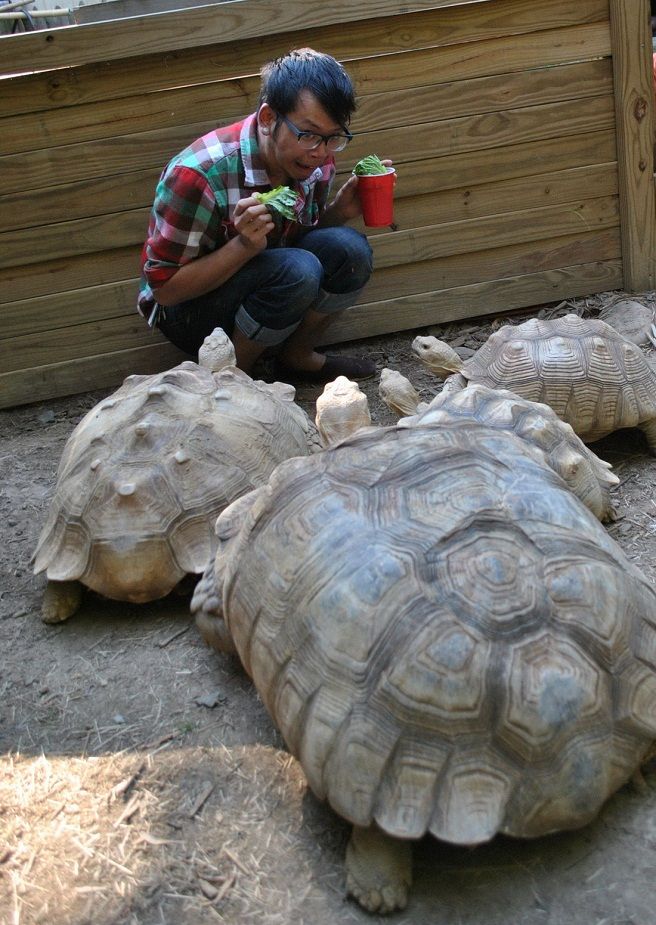
- Bathing area should be between 85 and 95 degrees Fahrenheit.
- The rest of the tank, which is ambient air above the water and away from the bathing area, should be between 80 and 75 degrees Fahrenheit.
Tank size
Painted turtles love to swim, so they need a tank big enough to move through the water.
- A toddler or turtle should eat a tank with at least a 15-20 gallon tank with 10 gallons of water.
- If you have two or more turtles or baby turtles, you must add five gallons of water for each additional turtle.
- For adult turtles, you must have a tank that can hold at least 20 gallons of water per turtle and add 10 gallons for each additional turtle, as well as extra space for their non-water activities.
Tank type
Your painted turtle will do well in a regular glass aquarium or even in a sturdy plastic bag, as long as it has enough water, space and space to swim. They can also do well in an open pond if it is cleaned and filtered regularly, and they have a combination of shady and sunny areas.
Cleaning
Plan to clean the aquarium at least twice a week, or more often if there are several turtles in the aquarium. You should also do 25% water changes weekly.
Painted Turtle Food
Painted Turtles are omnivores and may need a varied diet to stay healthy.
- You can feed them commercially made turtle food or trout and supplement it with small forage fish (but not goldfish), mealworms, earthworms, crickets, snails, freeze-dried krill, freeze-dried shrimp, waxworms, parsley, herbs dandelion, romaine lettuce, red lettuce, collard greens, apples, berries, carrots, duckweed, water lettuce and water hyacinth.
- If you decide to feed them lettuce, do not feed them iceberg lettuce as it has no nutritional value for them.
- You can also add some minced beef heart, cooked soft chicken and low fat dog food for a change.
- The calcium block should also be added to their mineral supplement reservoir.
An adult turtle should be fed every two to three days.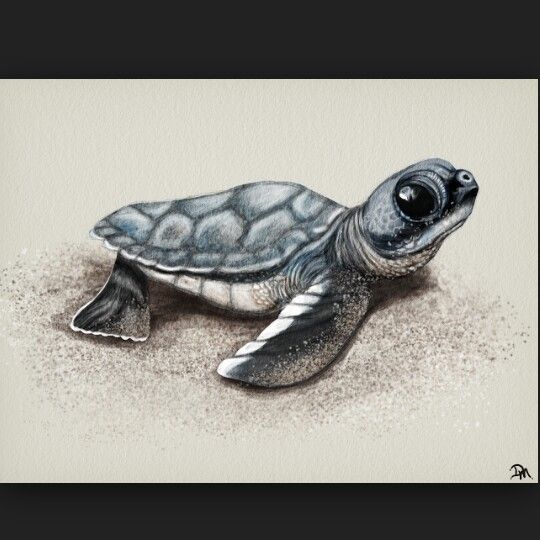 Because turtles need to eat with their heads in the water, they can be very messy eaters. Some tortoise owners feed them in a separate tank, although this means the tortoise will be more stressed than often.
Because turtles need to eat with their heads in the water, they can be very messy eaters. Some tortoise owners feed them in a separate tank, although this means the tortoise will be more stressed than often.
What do baby turtles eat?
If you have hatchlings and young turtles that need to be fed, you can purchase commercial food formulated specifically for young turtles. Omega One makes Pellets for Young Turtles food and Zoo Med has Natural Baby Turtle Food which are both good choices for young turtles. They can be fed until the little ones are two inches long and can transition into adult food. You should also supplement the baby cartoon turtle food with the same small feeder, worms, insects and plant matter that you feed the adults. Unlike adult turtles, you need to eat every day.
Painted Turtle Health
With proper care and a healthy diet, a painted turtle can live up to 50 years, although your turtle is more likely to live between 20 and 30 years.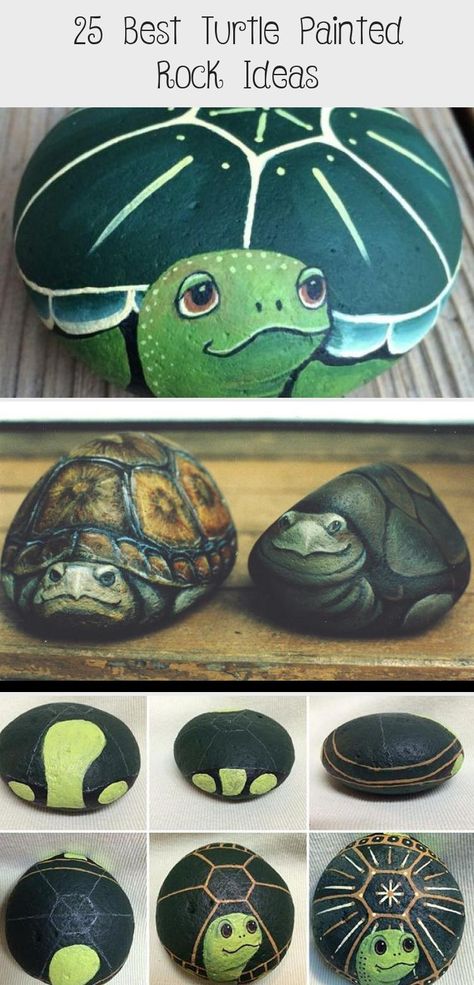 If you're considering a painted turtle, it's important to make sure you have a veterinarian in your area who has experience with reptiles and turtles in case your turtle gets sick. Common signs of the disease are swollen eyes, blisters from the nostrils, sores, difficulty breathing, lack of appetite, and trouble swimming or moving.
If you're considering a painted turtle, it's important to make sure you have a veterinarian in your area who has experience with reptiles and turtles in case your turtle gets sick. Common signs of the disease are swollen eyes, blisters from the nostrils, sores, difficulty breathing, lack of appetite, and trouble swimming or moving.
Handling a painted turtle
One of the reasons why painted turtles don't necessarily make the best pets, especially for younger children, is that they don't enjoy people and shy creatures. Because they are slow moving and generally docile, people often don't realize how stressed a turtle can be when picked up. It is important to treat the painted turtle as infrequently as possible and to limit this time when it is necessary for medical attention or cleaning the aquarium. In addition to minimizing their stress, you should treat them as little as possible due to the risk of disease.
Do painted turtles bite?
Since these turtles do not like to be touched, they may become defensive if they feel threatened. This means that they can scratch, kick and bite people if they are scared. They have also been known to urinate on humans and other predators if they are frightened.
This means that they can scratch, kick and bite people if they are scared. They have also been known to urinate on humans and other predators if they are frightened.
Painted turtles and hibernation
Wild painted turtles hibernate underwater in winter. They protect themselves by burying their bodies in the muddy bottom of bodies of water. If you keep painted turtles in your outdoor pond, they will do the same, although the pond must be deep enough not to freeze to the very bottom, and they will need a hole in the ice. The painted turtles kept inside do not need to hibernate and will not attempt to do so, as their bodies will only begin to hibernate when the temperature starts to drop.
Are painted turtles legal as pets?
Painted turtles are legal to have as pets in the United States, although you cannot buy turtles four inches long or less under federal law. This law was passed because these smaller turtles are more prone to spreading salmonella than the larger ones.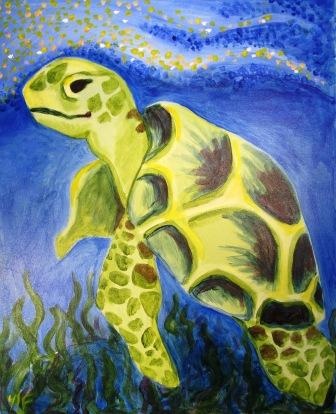 Arizona, Georgia, Oregon, New York, and Rhode Island have painted turtle ownership restrictions. Painted turtles are also not on the endangered species list, so there are no restrictions on ownership as they are rare.
Arizona, Georgia, Oregon, New York, and Rhode Island have painted turtle ownership restrictions. Painted turtles are also not on the endangered species list, so there are no restrictions on ownership as they are rare.
Where to find a painted turtle
Painted turtles can be found at the most reputable reptile pet stores, hobby breeders and turtle farms. If you are looking for babies, you will have the largest selection between May and September, although they can be found all year round. Many large animal shelters that accept reptiles also receive painted turtles from time to time, so it's best to check with your local shelter first. Never accept painted turtles that you have caught in the wild. They do not adapt well to domestication and stress will adversely affect their health and longevity. Painted turtles on average can be bought for 20-40 dollars.
counterfeit Louis Vuitton wallet vs real
Keeping a painted turtle as a pet
Painted turtles are beautiful reptiles and it's easy to see how they get their name from their bright colors. They require more work than many other pet turtle species and do not like being handled. If you have time for all their grooming needs and don't need a pet that has to cuddle and interact with you, they are a good choice that you can enjoy for years with proper care and feeding.
They require more work than many other pet turtle species and do not like being handled. If you have time for all their grooming needs and don't need a pet that has to cuddle and interact with you, they are a good choice that you can enjoy for years with proper care and feeding.
Amazon - What to feed turtles?
In vain, many people believe that turtles living at home are somewhat different from other pets, people just know little about the features of their maintenance and care, as well as what they feed turtles, these wonderful pets.
Domestic turtle
Russian pet shops and markets sell three types of aquatic turtles - red-eared, European marsh and Trionyx.
The red-eared slider turtle (marine or African ornamental) has a slightly greenish or dark brown shell, on its head behind the eyes there are red stripes-ears, and between the legs there are membranes.
The bog turtle has a brown or black shell, sometimes strewn with yellow spots or small dashes, the skin of such a turtle is dark, with yellow speckles.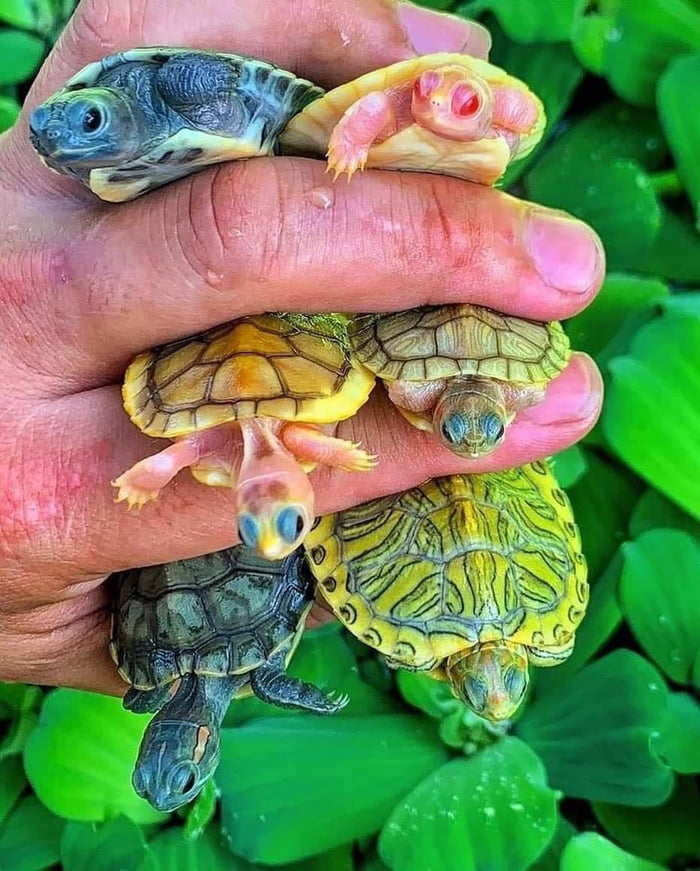
Funny Trionix tortoise - soft-bodied with a light beige shell in adults, and dark beige in babies. Surprisingly, the shell of this turtle is covered with skin (for which it got its name), and instead of a nose, it has a small proboscis. This is not all of its amazing features - Trionix has a long neck and paws with membranes and sharp white claws. The nature of the turtle, say, is not very friendly, rather aggressive, and it prefers loneliness, so you need to keep it in a single copy. Adult turtles can reach 30 centimeters and live up to 40 years, although the bog turtle is considered among them to be long-lived - it can live in good conditions for about 70 years.
How to feed a turtle
To create a comfortable and “happy” life for turtles, they need to be fed properly, and since feeding correctly, this means not only what, but also how to do it. The whole difficulty lies in the fact that you need to teach the turtle to eat on the shore, that is, she must understand that in order to eat, she must go ashore.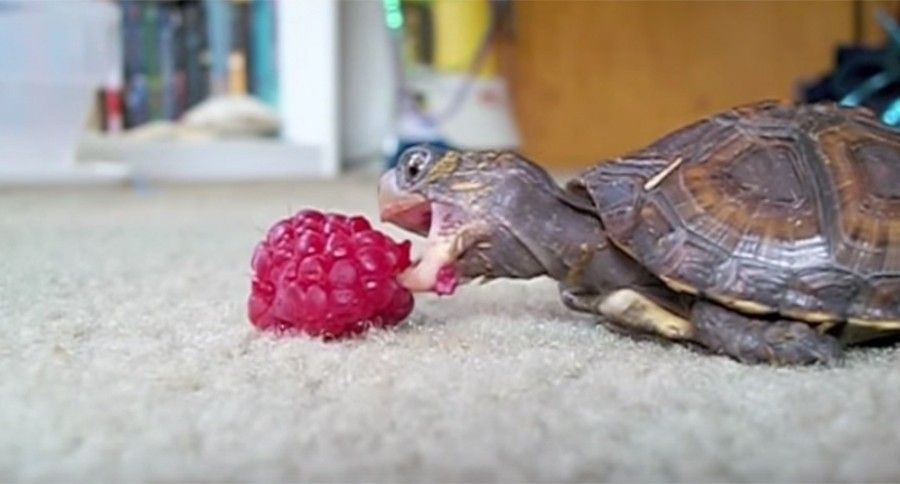
Another problem is that most of the foods that are offered to red-eared friends are bloodworm, meat and squid only contain the amount of protein required for tortillas. Factory-made pelleted food can also contain the right amount of fats, proteins and vitamins. However, all types of feed do not contain the amount of calcium that all turtles need so much. They solve this problem in two ways, at the same time the question is how to feed a domestic turtle.
First of all, you need to start luring the turtle ashore. First, food is placed at the sloping shore at the water's edge. Gradually, putting the food, diluted with a small amount of water, in a small saucer, they begin to move it away from the water at an ever greater distance. The turtle begins to understand that in order to eat, it must climb out onto land.
Turtles are also fed on the shore in a different way, planting them in any small container with water. In this case, it is very convenient to add calcium salts and vitamins in powder form to the feed.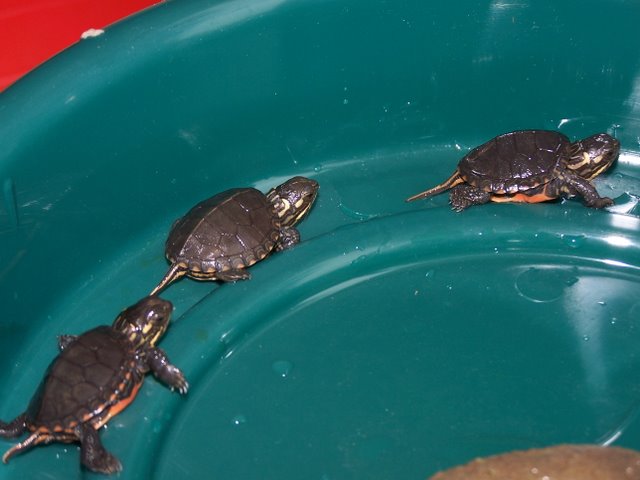
The fact that turtles like to eat in the water, and only in their "native" home - the aquarium, is known to all owners, but this type of feeding has many significant drawbacks. Food, especially of animal origin, instantly deteriorates in water, and not only clogs the water, but also destroys biofilters.
If you still fail to accustom the turtle to eat outside the aquarium, then you must adhere to a certain rule, namely, take food out of the water 30 minutes after the start of feeding (usually this time is enough for the turtle to get enough).
What do domestic turtles eat
What do domestic turtles eat
, such as Ampularia spp., or land snails - Helix aspersa. Despite their small size, turtles can eat small aquarium fish, such as guppies, whole. Also, in order to increase the amount of calcium, turtles are fed thawed fish, cut into small pieces. It is best to feed fish of the perch family (herring and mackerel - undesirable). In large specimens of fish, large bones must be removed, and the remaining fillet, along with vertebral bones, should be cut and given with other food.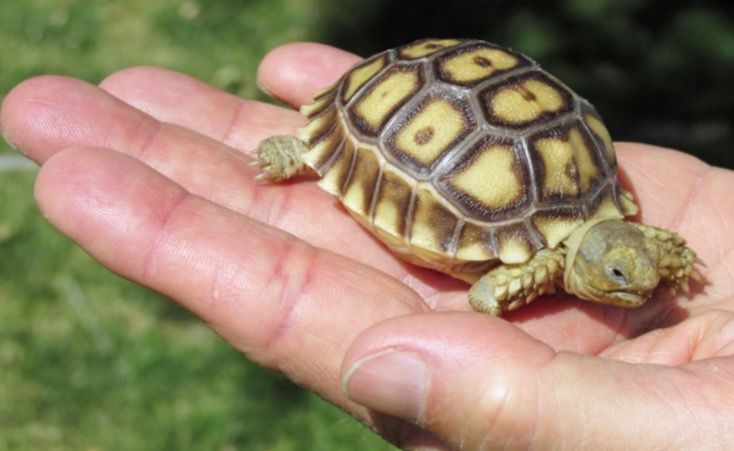 Too oily fish, for example, capelin, sprat, sprat, herring, it is best to hold it for some time in hot water (80 ° C - 2 minutes) before feeding. Turtle owners should be aware that if the question arises of what to feed red-eared turtles at home, then meat is the most inappropriate food of all kinds. This type of food is fraught with the development of rickets and hypovitaminosis A in turtles of all varieties. Meat is allowed to be added little by little to the "correct" food for those turtles that grew up on granulated factory food, because some of its types do not have enough protein. And one more thing that the owners of tortillas should know - if the turtle is accustomed to raw meat, then they will not want to accept other food, and this is very harmful to their health.
Too oily fish, for example, capelin, sprat, sprat, herring, it is best to hold it for some time in hot water (80 ° C - 2 minutes) before feeding. Turtle owners should be aware that if the question arises of what to feed red-eared turtles at home, then meat is the most inappropriate food of all kinds. This type of food is fraught with the development of rickets and hypovitaminosis A in turtles of all varieties. Meat is allowed to be added little by little to the "correct" food for those turtles that grew up on granulated factory food, because some of its types do not have enough protein. And one more thing that the owners of tortillas should know - if the turtle is accustomed to raw meat, then they will not want to accept other food, and this is very harmful to their health.
Treats for turtles
Treats for turtles - shrimp and squid
In addition to the constant food, turtles need to be given various treats (of course, in their understanding). As a rule, turtles of all kinds are very fond of live special food - earthworms, bloodworms, tubules, carriage.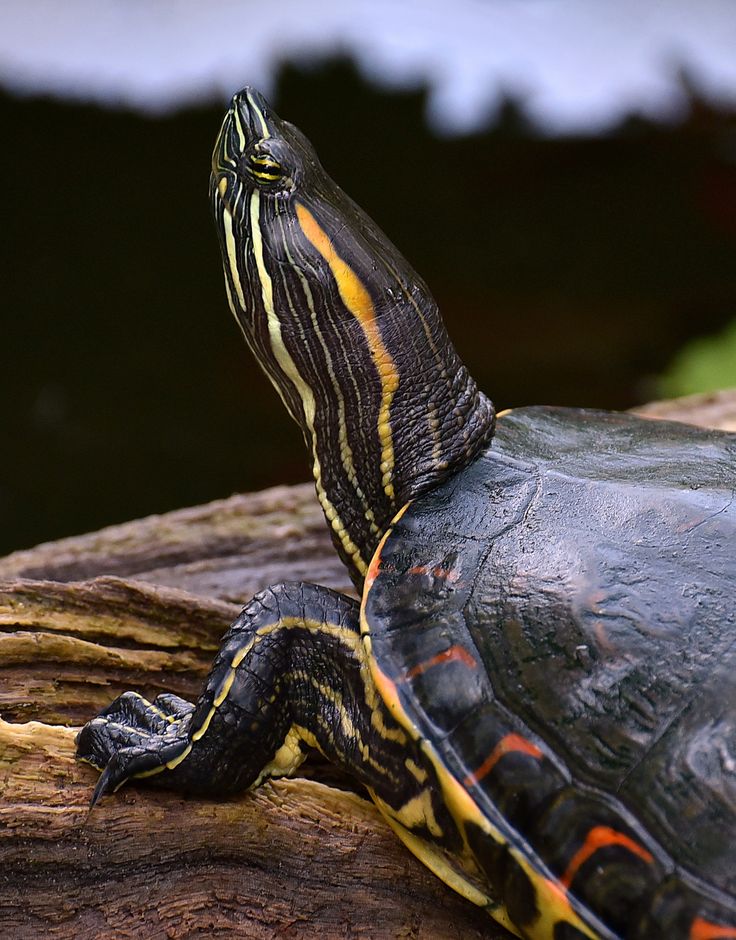 Such additives are very fond of young turtles, moreover, they are very useful and necessary, especially after starvation, which may be associated with illness or hibernation (in winter, turtles can sleep from 10 weeks to 5 months, it all depends on the size of the individual).
Such additives are very fond of young turtles, moreover, they are very useful and necessary, especially after starvation, which may be associated with illness or hibernation (in winter, turtles can sleep from 10 weeks to 5 months, it all depends on the size of the individual).
They love turtles and squid and shrimp meat, they really like (and healthy) raw liver. This, of course, is not the main type of food, but if you add liver to the food at least once a week, then you can not give vitamins.
Some conscientious and scrupulous owners of turtles prepare with their own hands a common delicacy that is healthy and tasty for tortillas. This is a feed mixture prepared on the basis of ordinary food gelatin or its vegetable substitute - agar-agar. This will allow not only to solve the question of what to feed the aquatic turtles, but also to diversify the turtle menu as much as possible with healthy and nutritious food, which will include both vitamins and minerals.
The mixture consists of cabbage (50 g), carrots (70 g), apples (50 g), fish fillet (145 g), raw eggs (2 pcs. ), squid fillets (100 g), milk (150 ml) . In the base, consisting of gelatin dissolved in water (30 g / 150 ml), add the entire prepared mixture and 20 drops of Tetravit, 10 tablets of calcium glycerophosphate.
), squid fillets (100 g), milk (150 ml) . In the base, consisting of gelatin dissolved in water (30 g / 150 ml), add the entire prepared mixture and 20 drops of Tetravit, 10 tablets of calcium glycerophosphate.
Prepare in the following sequence. Warm water is first poured into gelatin, after swelling it is brought to steam dissolution. Grind all prepared products in a meat grinder and mix. Vitamins and detailed glycerophosphate tablets are added to the mixture after its temperature drops to 25-30 ° C. Then, the mixture is stirred again and put in the refrigerator. Before feeding, the finished mixture is cut into small cubes and allowed to warm up to the optimum room temperature. The resulting amount of food is enough for ten feedings for one adult turtle. In the same mixture, you can easily add crushed drugs, in case of illness.
Some Important Tips
As turtles get older, they begin to eat more plant-based food, and the owners of these amazing ancient tortillas should take this into account.





